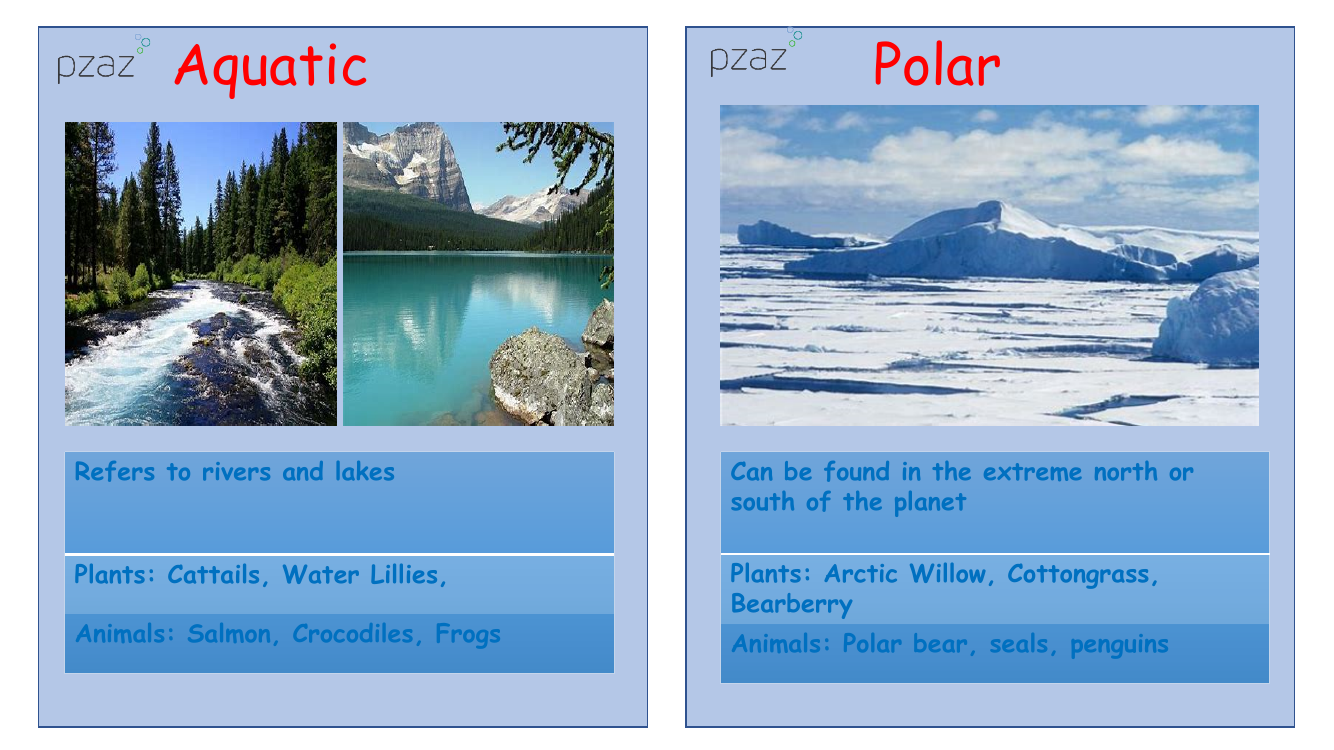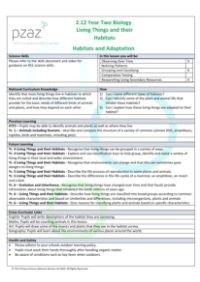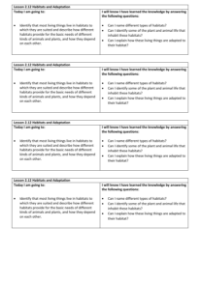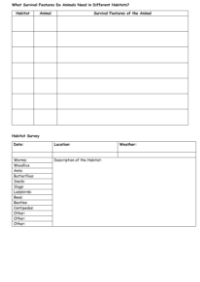Habitats and Adaption - Habitats Cards

Science Resource Description
The Aquatic habitat, encompassing rivers and lakes, is rich with vegetation such as Cattails and Water Lilies, and is home to a diverse array of animals including Salmon, Crocodiles, and Frogs. In stark contrast, the Polar habitat is situated at the extremities of the globe, in the far north and south, where the environment is much harsher. Here, hardy plant species like Arctic Willow, Cottongrass, and Bearberry thrive, and animals adapted to the cold, such as Polar bears, seals, and penguins, are commonly found.
Mountainous regions, scattered across the planet, host unique ecosystems where Grasses and Alpine Flowers grow, and animals such as Snow leopards, Ibex, and Condors roam. Similarly widespread, Grasslands are found on all continents except Antarctica, characterised by Grasses, Milkweed, and Wildflowers, and are roamed by animals like Zebras, Capybaras, and Pronghorns. Rainforests, confined to tropical areas, are bursting with life, including Rubber trees, Heliconia, and the Hanging Lobster Claw plant, as well as animals like Tapirs, Gibbons, and Gorillas. The Marine habitat, covering the vast oceans, is the largest on Earth, with an abundance of plant life including Seaweed, Kelp, and Algae, and a wide range of animal species such as Whales, Sharks, Turtles, Octopus, and various fish. Forests, with cooler climates, are typified by dense woodlands with Conifers, mosses, and ferns, and are inhabited by creatures like Wolves, Bears, and Deer. Lastly, the Extreme habitats are regions of intense heat or cold and other challenging conditions where few can survive, yet life such as Kalanchoe and Cacti plants, as well as Tardigrades, Pompeii worms, and Yeti crabs, manage to endure.







